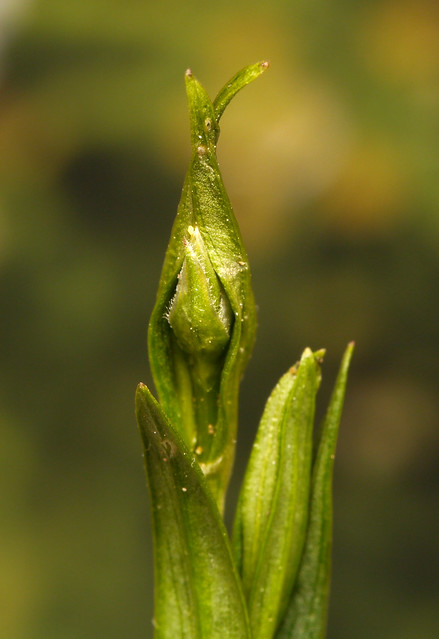Since then the moth was encountered once more, at light in August, on the western edge of the Forest near Park House.
 |
| Spun flower in lesser stitchwort |
Recent attempts to find the moth in the spring, either at light or flying during the day, have been unsuccessful so this year a concerted effort was made to find areas in the forest where the food plant still grows. Tony could find no lesser Stitchwort in the original meadow behind Lodge Hill. The tops of the ant hills were severely grazed and left largely bare. On June 1st I joined Tony and other members of the Wyre Forest Study group on a visit to the Park House site. This was a little more encouraging in that the food plant was present albeit in very low density. We also made a visit to a private meadow just outside the forest which had an abundance of Lesser Stitchwort but we could find nothing feeding at either site. Finally Tony and I tried the meadow in front of Lodge Hill Farm. The plant was found in small clumps on the tops of ant hills and a couple of likely looking spun stems were found.
Examining the spinnings under magnification confirmed that they were inhabited by small larvae. I also found several even smaller larvae on other stems collected more or less at random, there being little or no outward sign of occupation. Leaving this material in boxes on clean paper for a few days, the larvae revealed themselves by the small piles of frass left below inhabited flowers and leaves. Tony and Mike described the larvae they found in 1994 as 'apple green' in colour. Initially the larvae found this year were pale cream, but they quickly darkened into a convincing apple green as they matured over the next two or three weeks. Once full fed they pupated in tissue.
 |
| Mid instar larva |
 |
| Final instar larva |
In all I collected 6 larvae. Their age range was quite wide, with the first two (those found in the spun plants visible in the field) pupating within two weeks. The smallest larvae took a further week to feed up before pupating.
The first imagines emerged on 29th June.
 |
| Caryocolum junctella |
Oliver Wadsworth.

Admirable persistence and field work there Oliver!
ReplyDeleteCouldn't agree more. Good work.
ReplyDeleteWell done Oliver!
ReplyDelete